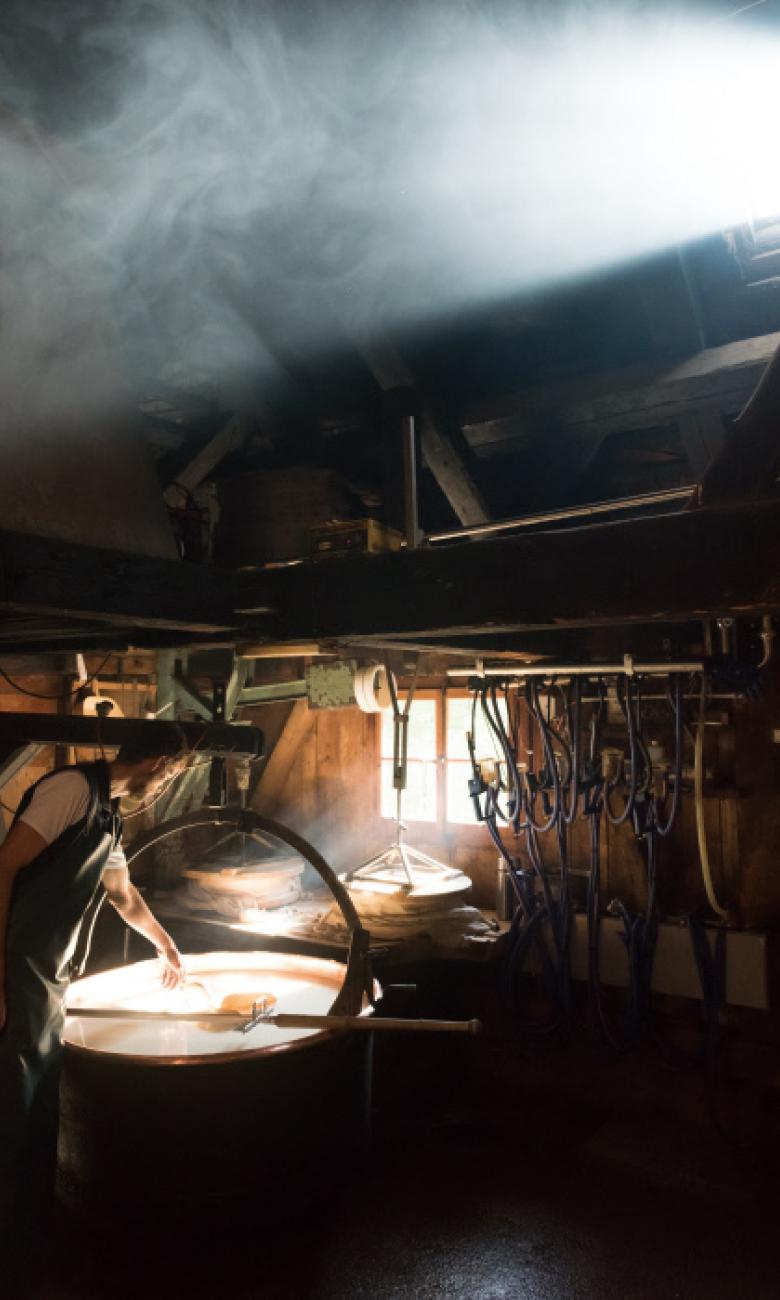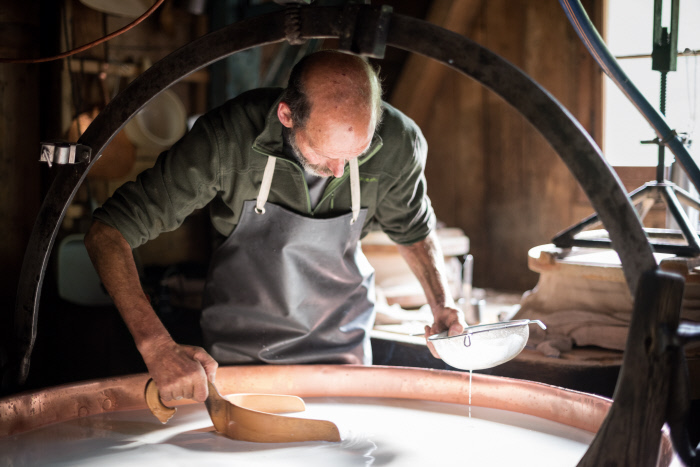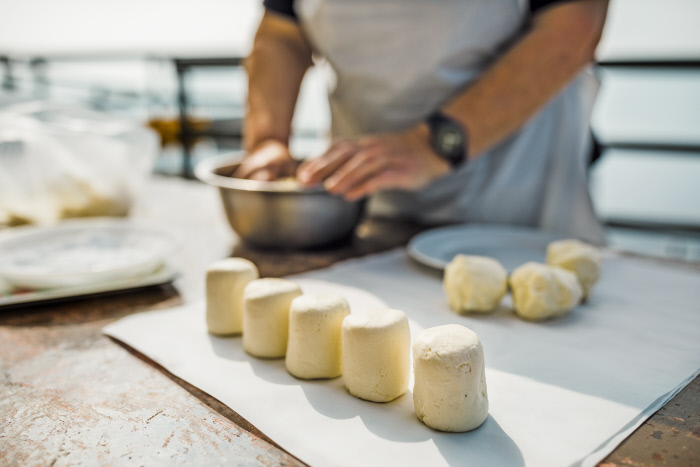Swiss cheesemakers conquer the world
Gruyère, Emmental and Tilsiter. These Swiss cheeses are famous all over the world. Although the names of these cheeses and the recipes behind them are protected to assure consumers that they are made in Switzerland in accordance with strict standards, Swiss cheesemaking traditions are now thriving in some of the most unexpected places around the world.
"No one really knows where or when cheese was first made," says Eric Masseraz, a dairy farming consultant for the Canton of Valais. According to the History Unit of the Federal Department of Foreign Affairs, the first written record of cheese dates back to Old Testament texts written almost 4,000 years ago. "Among cheesemakers, there is a legend that cheese was first created by accident. The story goes that a merchant set out across a desert with milk in a pouch made from a sheep's stomach. By sundown, the hot sun and the rennin from the stomach lining had coagulated the milk and separated it into whey and curd – cheese – which as it turned out, had a delightful taste," recounts Eric Masseraz. "For centuries, Swiss rural communities relied on cheesemaking as a method of milk preservation. As recently as 50 years ago, most families kept a couple of cows they would graze on mountain pastures each summer. The milk they produced during the grazing season was used to make butter and cheese for the winter."

Know-how dating back to the Middle Ages
The Celts were the first to graze animals on alpine pastures. Because they raised cows for meat, they made cheese from sheep's and goat's milk. Cheese began to be made from cow's milk in the Middle Ages, and the discovery of rennet – curdled milk from the inner lining of a calf's stomach – led to the production of hard cheeses. Gruyère, Emmental, Appenzeller and Sbrinz were first produced in the early modern period. Because Swiss hard cheeses could be stored for a long time, they became a highly valued commodity throughout Europe, and their fame endures throughout the world to this day.
The opening of the Gotthard Pass in the 13th century and the large-scale emigration of young people to escape work in the fields or serve in foreign armies helped spread Swiss products and know-how beyond Switzerland's borders. In the 15th century, the Catholic Church played a key role in the development of Swiss cheese when it decided to loosen fasting laws in the regions north of the Alps to allow the consumption of dairy products during Lent and church holidays. Swiss cheese was exported to and highly coveted in Italy, French Flanders, the Nordic countries and Britain.
As Swiss cheese became ever more popular over the years, Swiss cheesemakers themselves began to set up shop abroad. "An agricultural crisis is thought to have prompted large numbers of Swiss cheesemakers to emigrate during the the 1880s," says François Wisard, head of the FDFA History Unit. "Their main destinations were France, the Russian Empire and the Americas." "Emmental was probably the first Swiss cheese to be exported," adds Eric Masseraz. "For many years now, Switzerland has been known worldwide as the cradle of cheese with holes. Some people still mistake Emmental for Gruyère, which doesn't have holes." Actually, until the 18th century, Emmental was known abroad as 'Emmental Gruyère'.

The French Eldorado
France was the most popular destination for Swiss cheesemakers. According to a study by Claire Delfosse on the cheesemaking skills taken by Swiss cheesemakers to eastern France between 1850 and 1950, they were prized immigrants. As there was no longer enough work in Switzerland, they moved to mountainous regions like Franche-Comté and Haute-Savoie, where they set up Gruyère and Emmental dairies. According to contemporary population censuses, these Swiss immigrants came mainly from rural cantons like Fribourg, Bern, Thurgau and St Gallen. Because their skills were widely recognised and highly valued, work was easy to come by, either by word of mouth or through agricultural networks. The highest yields were achieved with Emmental cheese, which had a shorter maturation period was therefore more profitable. According to contemporary French production figures, 55,000 tonnes of Emmental cheese were produced in the 1930s.
Swiss immigrants in France were also highly skilled at making matured cheeses. Cream cheese made from second-grade Gruyère and Emmental was introduced in 1921. The best-known cream cheese is La Vache qui rit, a cheese spread with an image of a laughing cow on its packaging. A second generation of Swiss immigrants continues today to make cheese and spread Swiss cheesemaking skills in France.

Swiss immigrants in France were also highly skilled at making matured cheeses. Cream cheese made from second-grade Gruyère and Emmental was introduced in 1921. The best-known cream cheese is La Vache qui rit, a cheese spread with an image of a laughing cow on its packaging. A second generation of Swiss immigrants continues today to make cheese and spread Swiss cheesemaking skills in France.
The American dream
"Swiss cheesemakers started emigrating to the United States and Canada in the 20th century and are still doing so in the 21st," notes Eric Masseraz. "They set up large-scale cheese dairies in the hope of making it big and living the American dream." That's what prompted Hans Rothenbühler, a certified master cheesemaker from the canton of Bern, to emigrate to America, where he found work in a cheese dairy in 1950. In 1956, he bought an old cheese factory in Ohio which has been producing Emmental cheese ever since. Sixty years and many international accolades later, a third generation of Rothenbühlers continues to run the cheese factory, which is now one of the five largest cheese producers in the United States.
Russia beckons
Tilsiter is a well-known Swiss cheese and also the former name of a city in East Prussia (now in Russia). At the end of the 19th century, some 300 Swiss cheesemakers – most of them specialising in Emmental – left Switzerland for Eastern Europe because they could no longer find work in their home cantons. A number of them were offered work in East Prussia because its population had been decimated by the plague. The first Tilsiter was made in 1822 in Tilsit in a dairy run by a Mrs Westphal, the wife of a Swiss cheesemaker. In 1893, Otto Wartmann and Hans Wegmüller, Swiss cheesemakers who were travelling in East Prussia, sampled their first Tilsiter and decided to start making this cheese variety back home in Switzerland. Tilsiter is still produced in Switzerland and is now marketed under the name 'Tilsiter Switzerland'.
Skills handed down from generation to generation
"Swiss cheesemakers are still emigrating to other countries but nowadays it's more of a personal, individual decision than a demographic phenomenon," notes Eric Masseraz. Swiss cheeses continue to be loved both in Switzerland and around the world, and Swiss cheesemakers regularly win awards in international competitions. The recognised expertise of Swiss cheesemakers is founded on a high level of professional training. Traditional cheesemaking skills handed down from generation to generation are still being taught in Switzerland. Every year, about a hundred new master cheesemakers are certified.

© Switzerland Tourism - By-Line: swiss-image.ch/Ivo Scholz




